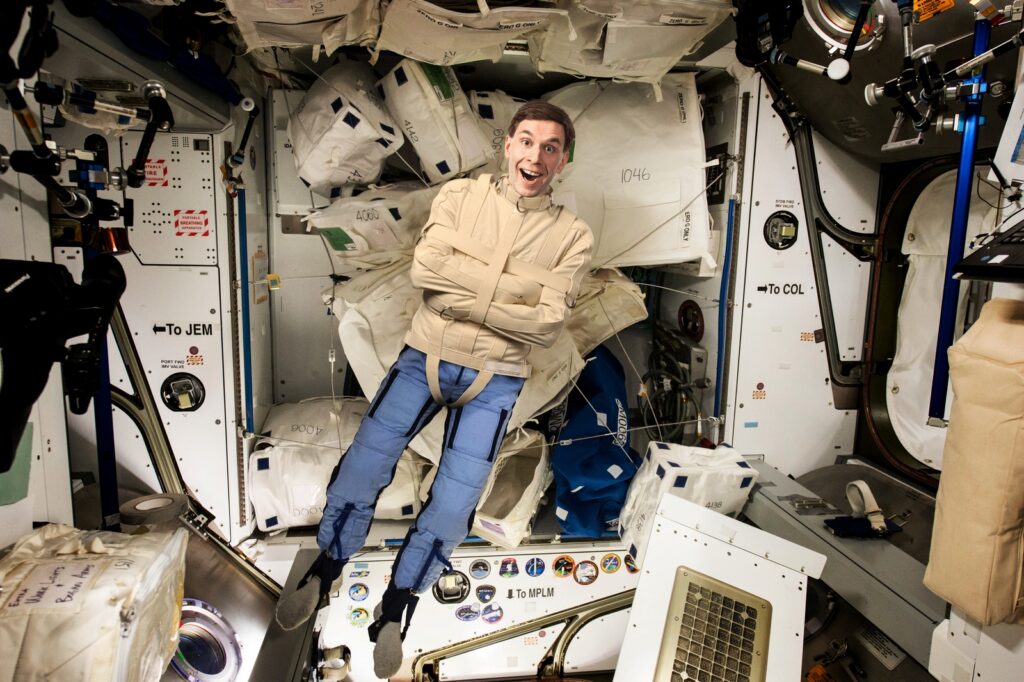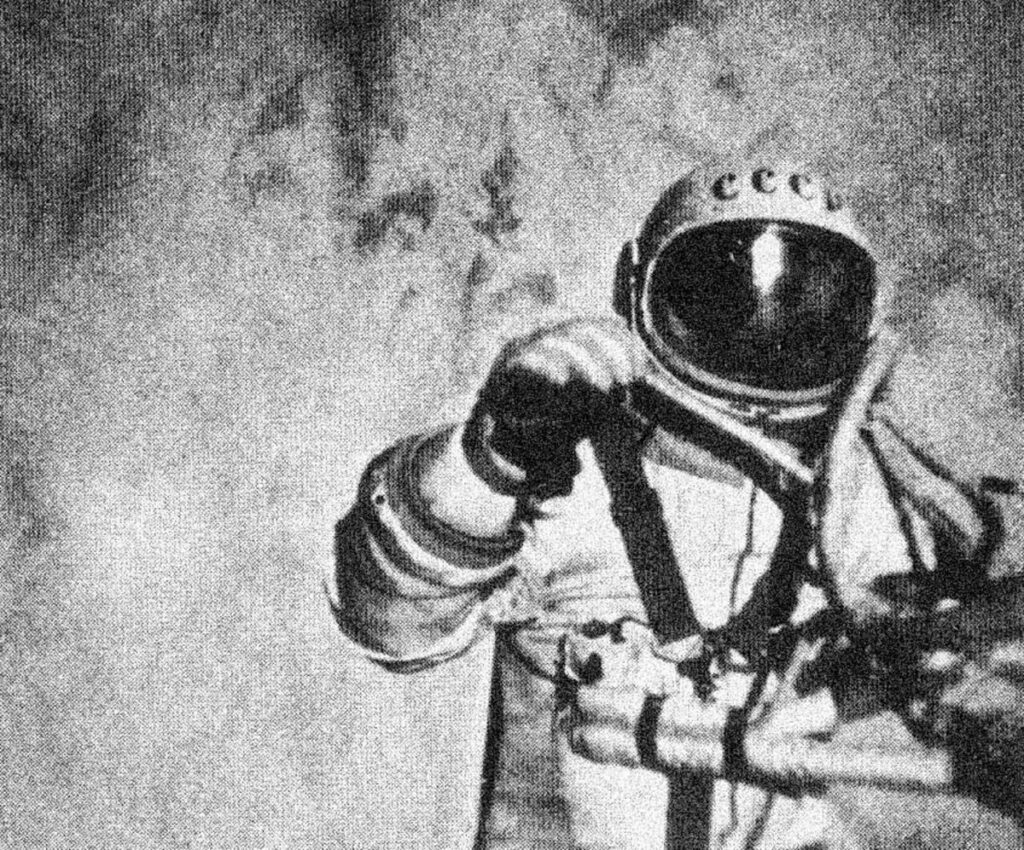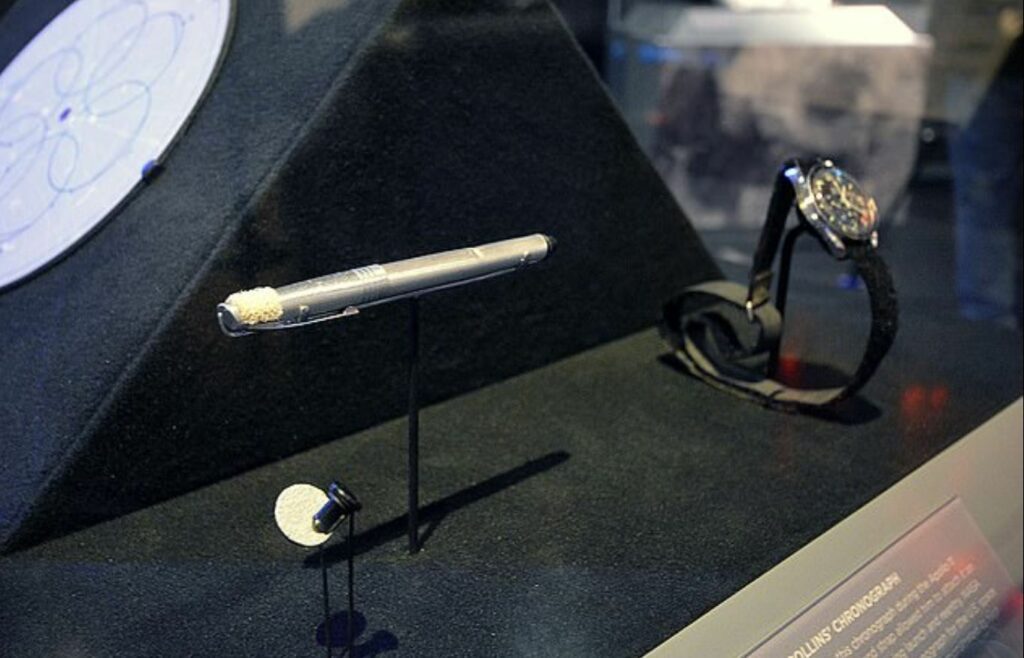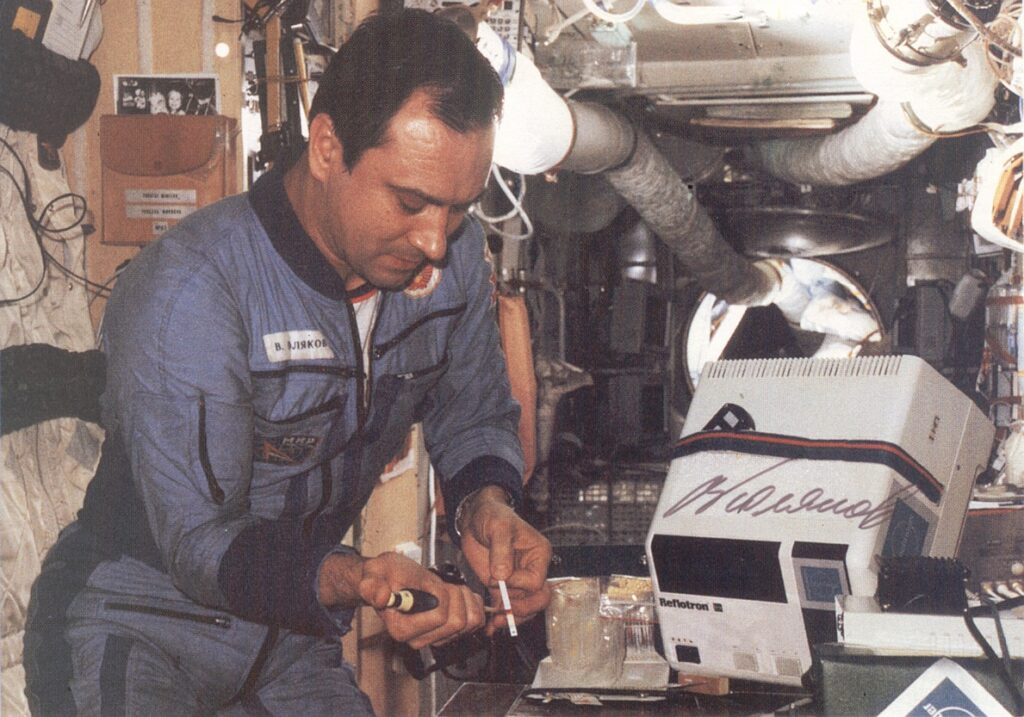Cosmic madness, survival in extreme situations, overcoming the effects of loneliness and group isolation — such are the challenges posed by outer space to practical psychology. Every manned space mission is a situation at the limit of possibilities. And astronauts have been preparing for years for such an experience. During the preparation, non-trivial exercises are used, such as staying awake for three days in a soundproof isolation chamber and dozens of parachute jumps from five kilometers’ height. But despite careful selection and years of training, even the staunchest conquerors of space have nervous breakdowns.
The madness of the first flight
In the event of a failure of the Vostok-1 ship’s automation, Yuri Gagarin was to take control of the spacecraft. But the first cosmonaut did not know the code to switch to manual control — he was supposed to request it from Earth. The doctors who were preparing Gagarin for the flight were afraid that he, in the event of such a situation, would direct the ship into the cosmic abyss. Hypotheses were considered that the human psyche cannot withstand microgravity or that the appearance of the native planet “from the outside” can be too traumatizing. According to the memoirs of the leading designer of Vostok-1 Oleh Ivanivskyi, psychiatrists assumed that “in weightlessness, a person goes crazy and loses the ability to think rationally.”

During the first recruitment of Soviet cosmonauts in 1959, special attention was paid to the composure of the applicants, i.e. their ability not to lose control over themselves during critical situations. Gagarin himself recalled passing the test, when during the solution of logical problems the examiner’s voice from the loudspeaker offered “prompts”, trying to confuse him distracting from the correct answer. Of the 347 pilots who passed the initial selection for the space unit, 53 refused to participate in the competition after an individual conversation about the deadly dangers of the program. On the eve of Gagarin’s flight, the state information agency TASS prepared three versions of the official announcement: solemn, discreet (in case of a failed launch) and tragic (about the death of the cosmonaut). Fortunately, Vostok-1 successfully entered orbit, the automation did not fail, and Yuri Gagarin returned to Earth physically and mentally intact.
Meanwhile, in the USA, during the selection of astronauts, the medical staff also feared “space madness”. But it is assessing of the personality of potential pilots that became a much deeper problem. Astronautics historian Matthew Hersh from the University of Pennsylvania claims that the US Air Force psychiatrists responsible for selecting the first Mercury-7 astronauts for the crew described a spaceflight candidate as “an impulsive adrenaline junkie with suicidal tendencies and sexual deviance.” Under the clear influence of psychoanalytic theory, they wrote that flying high-speed fighters was a means for the pilots to sublimate their sexual deviations.
Of the 508 American pilots who applied, 32 of the final astronaut candidates underwent a thorough psychological examination at a private clinic in Albuquerque. Psychiatrists’ fears were not confirmed: sexual deviations and suicidal tendencies were not detected in the test pilots. Neither during the first flights, nor during the farthest journey of Apollo 13 from Earth (400,000 km), nothing similar to unmotivated space madness was observed.
But you should not think that space journeys are as safe for the psyche as long-distance terrestrial travel. Overloads during takeoff negatively affect the physical well-being and emotional state of astronauts. Microgravity also plays an important role. The organ of balance — the vestibular apparatus — focuses both on the feeling of gravity and on the visual perception of top and bottom. In conditions of weightlessness, space sickness occurs, like seasickness, with such symptoms as dizziness, nausea, headache, apathy, sleep disturbances and appetite disturbances.
According to cognitive psychologist Lawrence Harris from York University in Canada, an effective method in combating space sickness is painting the internal surfaces of the station in different colors to define the conventional floor and ceiling, as well as hanging vertical paintings on the walls — for example, images of waterfalls. These techniques help the brain determine the position of the body in relation to the conventional vertical, which significantly accelerates adaptation to the feeling of weightlessness.
The main task of psychologists is to detect a candidate’s psychological predisposition or inability to space environment while still on Earth. For this, both classic questionnaires and observation of applicants, in particular in stressful situations, are used. But even such a thorough selection does not always allow predicting the behavior of even a trained cosmonaut in a non-standard situation, especially when his physical and mental resources are exhausted.
The territory of total extreme
The first spacewalk in 1965 could have ended fatally for Oleksiy Leonov. When the cosmonaut was returning to the airlock compartment of the Voskhod-2 ship, his suit turned out to had got inflated and he could not squeeze into the hatch. There was no time left for consulting with the Mission Control Center (MCC). Leonov recalls that when he decided to reduce the internal pressure of the spacesuit, he also took into account the possibility of boiling his own blood due to the release of nitrogen bubbles.

In order to learn how to make such important decisions as quickly as possible, astronauts practice most of the complex actions until they become automatic. They study in detail the structure, control panel and capabilities of spacesuits, spaceships and orbital stations. The training of a candidate from enlistment to the crew to the first flight takes at least two years. Not the last role here is played by general psychological preparation.
One of the main methods of concentrating attention and intensifying operations is breathing exercises, including artificial oxygen starvation, breathing in oxygen-saturated air, through dead space and through various obstacles in the form of filters. One of the elements of such training is the development of a certain rhythm of breathing to increase self-control. Psychologists choose the most stable emotional states of an astronaut, under which a respiratory “anchor” is produced. In an extreme situation, the pilot will breathe with the learned frequency and will be able to return to the closest “anchor” emotional state, as far as the circumstances allow.
Special parachute training (SPC) is also an important stage of pre-flight training. Astronaut candidates perform 40 parachute jumps from a height of 5 km. During free fall, you need to solve logical tasks, perform joint exercises and report in detail what is happening. Russian cosmonaut Oleg Artemyev said that “at first the report fails, there are only sounds… On the 30th-40th jump, you already solve all the tasks, complete all the reports.” The SPC develops not only composure, but also the ability to work in a team, understand and follow orders under strict time constraint. And for psychologists, parachute training is another opportunity to monitor future pilots in a stressful situation. Often, the next wave of rejection of candidates occurs after the SPC.

Thanks to such stressful training, space explorers learn to make quick decisions and make the most of the technology’s capabilities. For example, during the first landing on the Moon in 1969, the American Buzz Aldrin invented adapting the case of an ink pen to start the engine ignition system of the lunar module. And in 1997, after the collision of the cargo ship Progress M-34 with the Mir orbital station, the Russian Oleksandr Lazutkin, closing the hatches to the depressurized scientific module Specter, had to determine in the shortest possible time which of the power cables should be manually disconnected, and which ones should be cut with a knife. He perfectly coped with the task, saving the lives of the crew.
The more the sadder
At the beginning of training, everyone who has passed the selection spends 5 days in a dead room isolated from external sounds. All this time, the astronaut candidate is in a closed room measuring 12 m2 under the round-the-clock supervision of psychologists. The first day the subject adapts, then there are three days and two nights without sleep, during which it is necessary to solve tests and go through training. The candidate does not hear any external stimuli or reminders from psychologists until the end of the test.
Officially, the dead room became mandatory for the training of Soviet cosmonauts in 1962, but actually this procedure was used since very beginning — for example the very first squad spent ten days in seclusion. Modern specialists have shortened the stay in the dead room to 5 days, since this period is enough to assess resistance to stress. On the third day without sleep, some physically strong candidates begin to experience auditory or visual hallucinations. It seemed to them that the walls were closing, mice were running on the floor, and the sounds of classical music were heard. This test reliably rejects those who will not be able to stay long in the cramped living space of a spacecraft or orbital station.

In 1994-1995, record holder Valery Polyakov managed to endure a mission of 438 days on orbit without nervous breakdowns. Loneliness can really traumatize a person’s psyche, but it is worth noting that the cosmonaut was not in the conditions of Robinson Crusoe on a deserted island: he was constantly in touch with Ground Control, and other crews constantly flew to the station. The factor of motivation also became important — the mission was not just an idle whim, but was performed for the sake of the progress of all mankind. Today, in order to overcome the feeling of loneliness for American pilots, VR systems are being developed allowing an astronaut in orbit mentally visit virtual copies of his home or a training base on the ground.
The situation of group isolation is even more threatening for space flights. Astronauts have to huddle in closed spaces for months. In 1976, on the 42nd day of the Soyuz-21 crew’s stay at the Salyut-5 orbital station, an accident occurred that completely disabled the spacecraft (including the air regeneration system). Thanks to ground training captain Borys Volinov and flight engineer Vitaly Zholobov were able to fix the station in two hours. But this accident mentally broke Zholobov. At first, he complained of a constant headache, and then found himself in a state similar to clinical depression. Volinov later recalled how Zholobov just hovered around the station in the pose of an embryo with blank look. The captain requested from the MCC to terminate the mission on the 48th day in space, 11 days before its scheduled end. According to Kazakh cosmonaut Talgat Musabayev, the failure of the Soyuz-21 program did not occur due to a technical failure, but due to the psychological incompatibility of the crew members.
Conflicts in closed groups are observed not only among astronauts, but also among submariners or members of polar expeditions. From the point of view of behavioral psychology, the problem of group isolation is based on the mechanism of intraspecific aggression. Human is a territorial and hierarchical being. Our ancestors were forced to constantly engage in clashes with representatives of their own species in order to maintain their own territories and maintain their status among their tribesmen. Therefore, in confined space — be it a prison cell or a living compartment of an orbital station — people tend to show aggression.
To avoid conflicts, future astronauts are taught the psychology of small groups, where they are trained how to take the initiative in settling disputes and emotionally support their teammates. Long-term experiments to simulate interplanetary flight also inspire hope. In 1973, the first hermetic experiment was carried out, in which three Soviet cosmonauts spent a year in a living compartment measuring 12 m2. The largest of such projects, Mars-500, was also successful: from 2010 to 2011, six testers endured 520 days in isolation, rehearsing the flight to the Red Planet.
Despite their success, most such sealed projects are subject to criticism. No matter how strict the contracts of the participants are, the subjects understand that they can physically leave the base, and beyond the wall of the living compartment is their home planet, not the interplanetary abyss or Mars. It is important that in such programs there is constant control over the subjects and the opportunity for experimenters to influence their actions. Even if the situation occurs on orbit, the astronauts will still return to their home planet. But those travelling to Mars will be deprived of such control. Settlers of the Red Planet will have to independently resolve intragroup conflicts. Probably, the customs of the first Martian colonies will be more similar to the rules of life in the Wild West than to modern European democracies.
So far, the most effective methods of eliminating intraspecies aggression are the strict selection of applicants for flight, as well as the training of potential astronauts in the rules and techniques of conflict-free communication. Smart ideas are also put forward to form groups for a long-term flight while still on Earth. Only after a few years of joint training, and after passing the stages of group adaptation and culling, should we launch crews into space.
Modern psychologists can only guess what challenges the era of interplanetary and later interstellar flights will throw at them. Despite the 60-year history of astronautics, the conquest of extraterrestrial space is still experimental and extreme in nature. And this requires space explorers to work at the limits of their body and mind.

